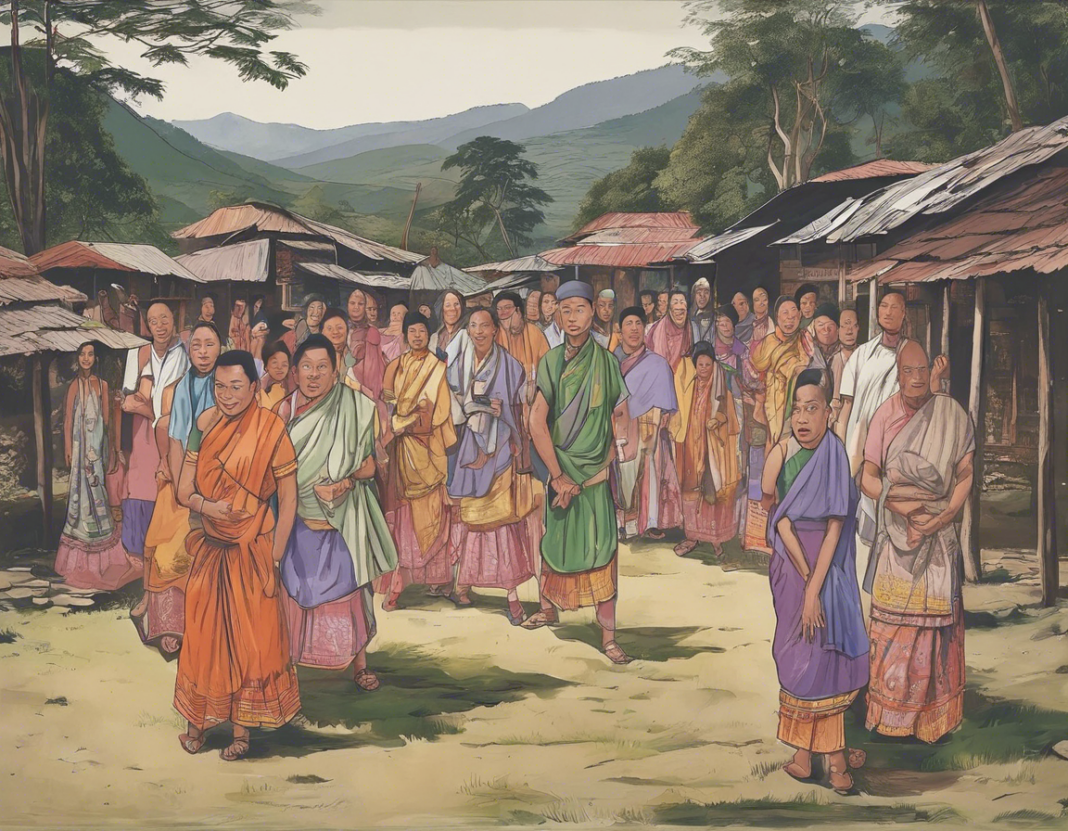Introduction
Manipur, a state nestled in the northeastern part of India, has been shrouded in mystery and intrigue for many. With its rich cultural heritage, scenic landscapes, and tumultuous history, Manipur has always been a topic of fascination for travelers and historians alike. However, in recent times, the state has been in the spotlight for a different reason – the complex socio-political issues that have plagued the region for decades. In this article, we will delve into the root causes of the unrest in Manipur, shed light on the major players involved, and explore the potential solutions** to bring about peace and stability in the region.
History and Culture of Manipur
Before we delve into the current situation in Manipur, it is essential to understand the historical and cultural context of the state. Manipur has a rich history that dates back to ancient times. The state was a sovereign kingdom until it was annexed by the British in the 19th century. Manipur is known for its vibrant cultural heritage, with traditional art forms like dance, music, and theater playing a significant role in the lives of its people. The state is also famous for its indigenous martial arts, particularly Thang-Ta and Sarit-Sarak, which have been practiced for centuries. The diverse ethnic groups** that inhabit Manipur, such as the Meiteis, Nagas, Kukis, and Pangals, add to the cultural tapestry of the state, making it a melting pot of traditions and practices.
The Insurgency Issue
One of the most pressing issues in Manipur is the insurgency problem that has gripped the state for several decades. Various militant groups** have been active in the region, fighting for autonomy, independence, or other political objectives. The demand for a separate homeland or greater autonomy by these groups has often led to clashes with the Indian government, resulting in a cycle of violence and instability in the region. The Armed Forces Special Powers Act (AFSPA), which grants special powers to the military in “disturbed areas,” has been in force in Manipur for many years, leading to allegations of human rights abuses and excessive use of force by security forces.
Major Players
To understand the conflict in Manipur better, it is crucial to identify the major players involved. The militant groups operating in the state, such as the United National Liberation Front (UNLF), People’s Liberation Army (PLA), and Kangleipak Communist Party (KCP), have been at the forefront of the insurgency movement. These groups have been involved in attacks against security forces, extortions, and other criminal activities to further their political goals. On the other hand, the state government** and security forces have been engaged in counter-insurgency operations to maintain law and order in the region. The complex interplay between these various actors has only exacerbated the situation in Manipur, leading to a vicious cycle of violence and instability.
Potential Solutions
While the situation in Manipur may seem bleak, there is still hope for a peaceful resolution to the conflict. A multi-faceted approach is needed to address the root causes of the insurgency issue and bring about lasting peace and stability in the region. Dialogue between the government and the militant groups is essential to address the grievances of the marginalized communities and find a political solution to the conflict. Development initiatives that focus on improving infrastructure, healthcare, education, and livelihood opportunities in Manipur can help address the socio-economic disparities that fuel the insurgency. Reconciliation efforts** that promote inter-ethnic harmony and understanding among the diverse communities in the state are also crucial to building lasting peace in Manipur.
Conclusion
**In conclusion, Manipur continues to be a region of great significance and complexity, with a rich cultural heritage overshadowed by the ongoing insurgency issue. By understanding the historical and cultural context of the state, identifying the major players involved, and exploring potential solutions to the conflict, we can hope for a brighter future for Manipur. It is essential for all stakeholders to come together, engage in dialogue, and work towards a peaceful resolution that addresses the grievances of all communities in the region. Only then can Manipur truly achieve the peace and stability it so rightfully deserves.
Frequently Asked Questions (FAQs)
1. What are the main reasons behind the insurgency problem in Manipur?
The insurgency issue in Manipur stems from various factors, including historical grievances, ethnic tensions, socio-economic disparities, and political marginalization of certain communities.
2. How has the Armed Forces Special Powers Act (AFSPA) impacted Manipur?
The AFSPA has been a contentious issue in Manipur, with allegations of human rights abuses and excessive use of force by security forces. Critics argue that the law has further fueled the cycle of violence and instability in the region.
3. What role do militant groups play in the conflict in Manipur?
Militant groups in Manipur, such as the UNLF, PLA, and KCP, have been at the forefront of the insurgency movement, carrying out attacks against security forces and engaging in criminal activities to further their political objectives.
4. How can development initiatives help address the conflict in Manipur?
Development initiatives that focus on improving infrastructure, healthcare, education, and livelihood opportunities in Manipur can help address the root causes of the conflict and create a conducive environment for peace and stability in the region.
5. What role can reconciliation efforts play in resolving the conflict in Manipur?
Reconciliation efforts that promote inter-ethnic harmony and understanding among the diverse communities in Manipur are essential for building lasting peace in the region. By fostering dialogue and cooperation, reconciliation can pave the way for a peaceful resolution to the conflict.









